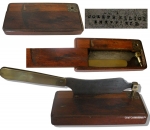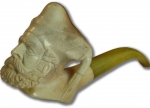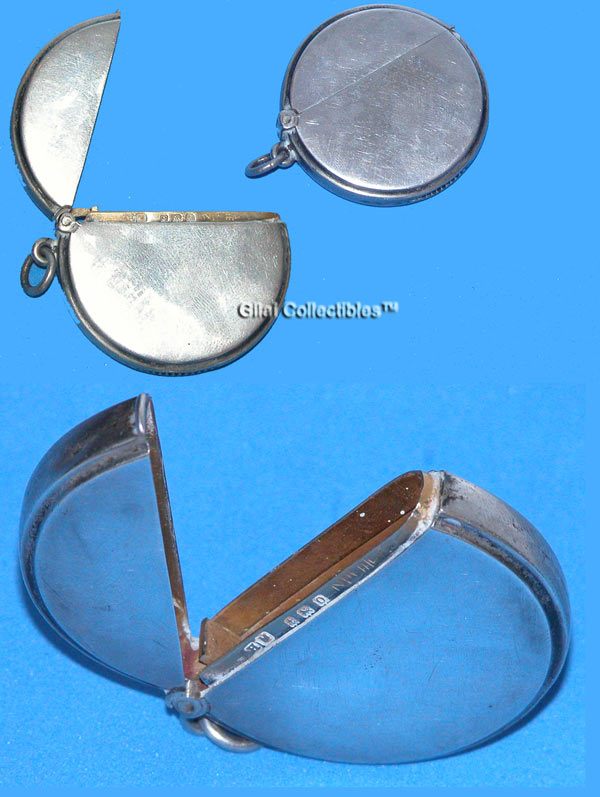General Collectibles > Smoking Implements
Unique Round Silver Vesta Case (Match Safe) 1913
Item#: TB238
SOLD
English round vesta case with turned design. Silver vesta cases were first developed because phosphorus headed matches caught fire very quickly and needed to be kept in non combustible cases.The inside of the cases would often be gilded to protect the silver from the sulphur head of the match, which would otherwise tarnish the silver. The lid is snap hinged, and the case has attached bail on the side. The ridges or surface for stiking the matches are bold and have, little, to no wear. The gilding is intact. The hallmarks are stamped on inside lip: The lion passant for sterling silver, the anchor for Birmingham, the letter O for 1913 and HM for H. Mathews silversmith. 4.3 cm (1.7 inches) in diameter.
Related Items
-
 Price: $100.00
Price: $100.00 -
 Price: $300.00
Price: $300.00 -
 Price: $150.00
Price: $150.00
Development: Epoch | Design: Luch
Copyright © 1999-2024 Gilai Collectibles. All Rights Reserved




